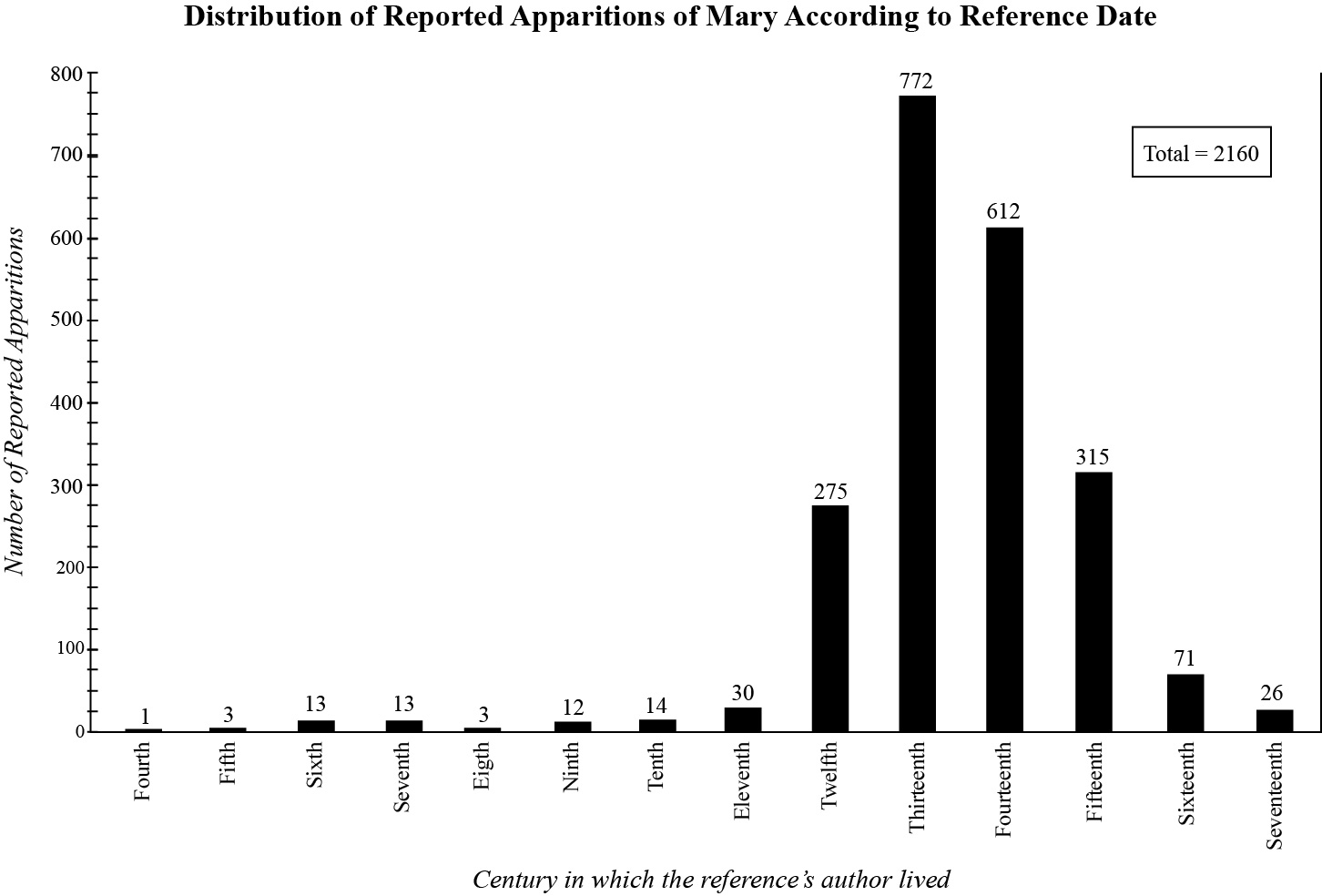Apparitions Statistics, Early
Apparitions Statistics, Early
Apparitions of the Past: A Statistical Study
This graph of Marian apparitions covers three prominent phases of church history: the Patristic age, the Middle ages, and the Renaissance. The time periods denote not the occurrences of apparitions, but the dates they were recorded by historians and church officials. Therefore, "these figures are indicative and do not represent reality except in a global and approximate fashion." (Laurentin 76) The graph presented here is based on a similar one constructed by Canon Renè Laurentin for a theology class. Laurentin notes that the data is exclusively from Sylvie Barnay's study of 2460 texts for his doctoral dissertation in 1997.
Barnay used original information for his study of Marian apparitions during the Middle Ages. However, Barnay's study for the Patristic age and the Renaissance is based only on secondary references. Statistics from the secondary sources include many apparitions of "which nothing is known except that someone claimed to have had them." (Laurentin 77) We will now summarize Barnay's information about the Patristic age, the Middle ages, and the Renaissance.
Patristic Age: There is no recorded literature about apparitions for the early centuries of the Church. The first attestations of Marian apparitions are from the fourth century. For example, Gregory of Nyssa, who lived in the fourth century, recorded that Gregory the Wonder worker (213-270 A.D.) was the first beneficiary of a Marian apparition.
Middle Ages: Canon Laurentin notes that "we do not know much" about cases of Marian apparitions recorded from the Middle Ages. The two most interesting cases from the Middle Ages are the seers at the Cistercian Monastery of Helfta (thirteenth century) and the visions of St. Bridget of Sweden (who lived 1303-1373).
Renaissance: During the sixteenth century, a new kind of apparition began. These apparitions had a public character and were intended to "re-animate faith" and to "surmount the world's crises." (Laurentin 88) The most significant case is Guadalupe (1531) which gave "birth to a new church on a new continent." (Laurentin 88)

The graph and historical summary are based on the following sources:
- Barnay, Sylvie. Les apparitions de la Vierge. Paris: Les Editions du Cerf, 1992.
- Laurentin, René. Marian Spirituality In the Mystical Tradition. International Marian Research Institute. Dayton: Marian Library, July 21-24, 1997.
All About Mary includes a variety of content, much of which reflects the expertise, interpretations and opinions of the individual authors and not necessarily of the Marian Library or the University of Dayton. Please share feedback or suggestions with marianlibrary@udayton.edu.
